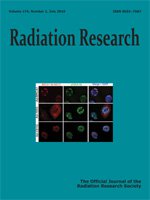While radiation increases the risk of lung cancer among members of the Life Span Study (LSS) cohort of atomic bomb survivors, there are still important questions about the nature of its interaction with smoking, the predominant cause of lung cancer. Among 105,404 LSS subjects, 1,803 primary lung cancer incident cases were identified for the period 1958–1999. Individual smoking history information and the latest radiation dose estimates were used to investigate the joint effects of radiation and smoking on lung cancer rates using Poisson grouped survival regression methods. Relative to never-smokers, lung cancer risks increased with the amount and duration of smoking and decreased with time since quitting smoking at any level of radiation exposure. Models assuming generalized interactions of smoking and radiation fit markedly better than simple additive or multiplicative interaction models. The joint effect appeared to be super-multiplicative for light/moderate smokers, with a rapid increase in excess risk with smoking intensity up to about 10 cigarettes per day, but additive or sub-additive for heavy smokers smoking a pack or more per day, with little indication of any radiation-associated excess risk. The gender-averaged excess relative risk per Gy of lung cancer (at age 70 after radiation exposure at 30) was estimated as 0.59 (95% confidence interval: 0.31–1.00) for nonsmokers with a female : male ratio of 3.1. About one-third of the lung cancer cases in this cohort were estimated to be attributable to smoking while about 7% were associated with radiation. The joint effect of smoking and radiation on lung cancer in the LSS is dependent on smoking intensity and is best described by the generalized interaction model rather than a simple additive or multiplicative model.
How to translate text using browser tools
21 April 2010
Radiation and Smoking Effects on Lung Cancer Incidence among Atomic Bomb Survivors
Kyoji Furukawa,
Dale L. Preston,
Stefan Lönn,
Sachiyo Funamoto,
Shuji Yonehara,
Takeshi Matsuo,
Hiromi Egawa,
Shoji Tokuoka,
Kotaro Ozasa,
Fumiyoshi Kasagi,
Kazunori Kodama,
Kiyohiko Mabuchi





